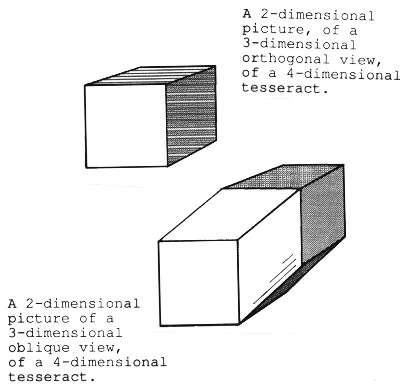Alicia Boole Stott
Today, we enter hyperspace on a kitchen table. The University of Houston's College of Engineering presents this series about the machines that make our civilization run, and the people whose ingenuity created them.
Your computer depends on Boolean logic. That's kin to the arithmetic that admits only two numbers: 0 and 1. Binary arithmetic doesn't go 1, 2, 3, 4. It goes 0, 1, 10, 11. The English mathematician George Boole built his logic on that arithmetic.
But we're interested in Boole's daughter, Alicia Boole Stott. George Boole took a professorship at Queen's College, Cork, in 1849. Alicia was born there in 1860. When she was four, George died of the fever and left the family with very limited means.
For the next 14 years, Alicia lived in bad conditions in Ireland and England. She was educated only up to the age of 16. Then a piece of serendipity: In 1878 a family friend brought in a set of wooden blocks and talked with Alicia about tesseracts.
A tesseract is a four-dimensional object. It is to a cube what a cube is to a plane square. If you have trouble picturing that, you can appreciate the task Alicia had taken on.
Alicia went on to be a secretary -- all the time thinking about the generalization of polygons into four-dimensional space. In 1890 she married an actuary of fairly modest means, Walter Stott. She raised two children while she built wooden models of the three-dimensional shadows cast by four dimensional objects.
She was a housewife whose hobby was hyperspace. Then she read a paper on those same geometric figures by Pieter Schoute, at the Dutch University of Groningen. So she sent photos of her models to him. He immediately suggested they collaborate.
And they did, until he died in 1913. She published papers in the pure math journals. After Schoute's death, the University of Groningen asked her to its 300th anniversary celebrations. They gave her an honorary degree -- the only degree she ever got. Later, she showed the cylinder it came in to her husband. "This will be a good place to keep sticks of macaroni," she told him.
During the 1930s, now over 70, she worked on the geometrical problems of arranging 4-dimensional kaleidoscopes. If you think a 4-D kaleidoscope is silliness, please think again. This kind of mathematics plays directly into applied physics and eventually touches practical problems in a very real world.
Maybe Alicia Stott was born with a genetic silver spoon in her mouth. Indeed, her nephew was the great authority on fluid flow, G.I. Taylor. More likely, though, this family simply honored the creative process, generation after generation.
After George Boole died, Alicia's mother sold his gold medal in math to buy a harmonium for her children. And there I believe we see Alicia Stott's real silver spoon. She lived in a family that loved the creative process and fed it -- any way they could.
I'm John Lienhard, at the University of Houston, where we're interested in the way inventive minds work.
(Theme music)
I refer to Alicia as Alice in the audio of this episode. Actually, her family pronounced her name as Alice although it was spelled Alicia.
Coxeter, H.S.M., Alicia Boole Stott (1860-1940). Women of Mathematics: A Biobibliographic Sourcebook. (L.S. Grinstein and P.J. Campbell, eds.) NY: Greenwood Press, 1987.
Batchelor, G., The Life and Legacy of G. I. Taylor. Cambridge: Cambridge University Press, 1996.
Alicia Boole Stott was always referred to familiarly as Alice. I've used that convention in the text. See also the material on George Boole in the Encyclopaedia Britannica.
